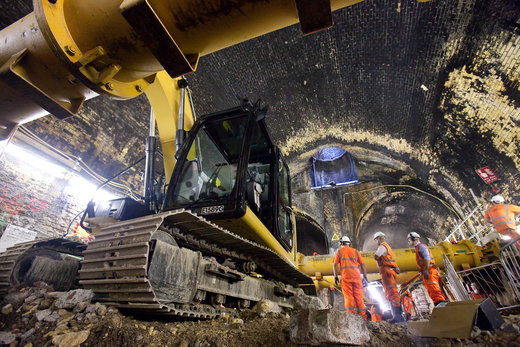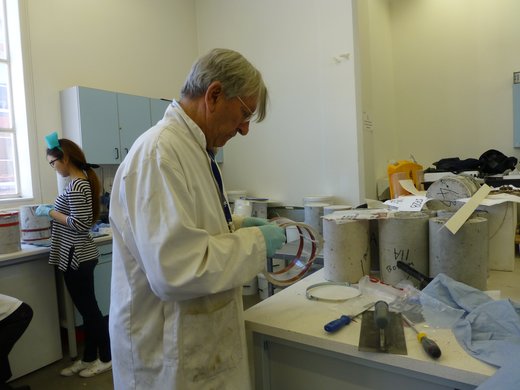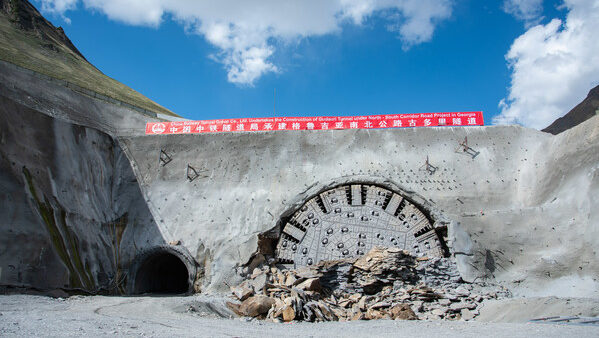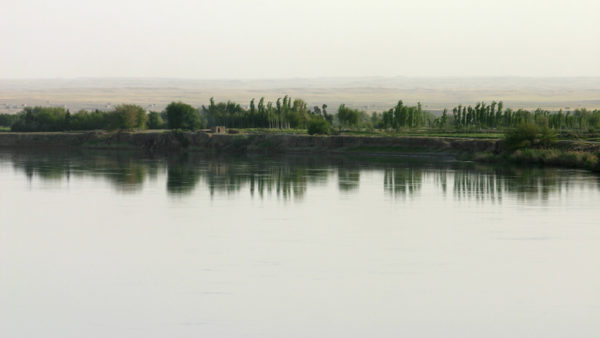25 September 2013
On Europe’s biggest civil engineering project, research has begun on a new type of concrete that could be up to 25% lighter than the concrete commonly used today, reports Ayshe Ismail
A dream has come true for a PhD student hoping to make his mark on building-material history.
Philip Owens, doctoral candidate at the UK’s University of Wolverhampton, believes it’s possible to develop a new, lighter form of concrete that could change the skyline of London by allowing taller structures.
And the key ingredient of this new recipe is London’s clay, the millionth tonne of which contractors on Europe’s biggest civil engineering project, the new underground rail scheme, Crossrail, dug up and carted away this month.
Mr Owens is absolutely certain that lighter concrete, achieved by varying the density of the aggregates used, is the next step forward for the world’s most common building material.
However, his pessimistic side believed it would be 20 years or more before his ideas attracted the funding necessary for development and commercialisation.
"Probably we are ahead of our time, but it doesn’t matter," he told me in August. "The principle is right."
But it did matter – and here’s the twist – because Mr Owens is 82.
"When you take on a degree at my age you’ve got to condense it to the shortest possible time," he said, "because will you ever get to the stage where [you can] write ‘Doctor Owens’ on your Christmas cards?"
Which explains his surprise and jubilation when, on 19 September, Crossrail awarded him and his team $24,000 to set up a special kiln to start testing recipes for the aggregate he believes is necessary for lighter concrete.
He was one of six awarded funding by Crossrail’s new Innovate18 programme, which had over 250 entries submitted for new construction techniques.

Work underway enlarging the Connaught Tunnel, part of London’s Crossrail scheme (Crossrail)
Life’s work
Mr (soon to be Dr) Owens is not your average ‘mature’ student.
This man knows concrete. In May he celebrated a 60-year career in the science and use of it.
On his own and latterly as one third of consultancy firm Nustone, established in 1997, Philip has advised contractors, government agencies, cement makers, and the ready-mix industry about his favourite material.
He has lectured, and in 1973 he wrote the ‘Basic Mix Method’, which formed the basis of a British Standard on concrete preparation and use.
It was his continued fascination with the science of concrete that led him to start a PhD in 2012.
"I never wanted to be an engine driver or an airline or fighter pilot," he said. "I always wanted to build." He added: "I believe you can make concrete out of almost anything if you know how."
Special property
Mr Owens said the award is a triumph for ‘joined up thinking’.
While Crossrail sends the earth it’s digging up to Wallasea Island in Essex for a new coastal nature reserve, historically, most of London’s excavated clay has ended up in landfill.
Mr Owens believes it could instead form the basis of a new manufactured aggregate that gives a greater range and efficiency to the performance of structural concrete.

Philip and team at work in the lab at the University of Wolverhampton
Using the clay dug out from the Crossrail tunnels Mr Owens plans to produce a light-weight aggregate that, when mixed with a natural aggregate and cement, could be used to make structural concrete that is up to 25% lighter.
He believes it’s possible because the capital’s clay has a special property: when heated it expands to approximately four times its original volume.
Although the resulting concrete isn’t as strong, it has better thermal properties and lower thermal movement, which means that it expands less as it heats up, and is less prone to cracking.
So far Mr Owens, and the team of masters’ students helping him, have shown that the principle of using a light-weight aggregate works.
The next phase of research is to develop the right aggregate, one that doesn’t affect the properties of the finished concrete too much and that can have a predictable reaction in the concrete mix.
Taller towers?
Although his research could have implications worldwide, Mr Owens believes that London could benefit in particular from lighter concrete because it would allow lighter buildings.
His argument is that if lighter buildings require shallower foundations, taller structures could be built on ground riddled with tunnels, as is the case in central London.

Could lighter concrete mean taller structures in central London? (Wikimedia Commons)
The social benefit, he believes, is that taller buildings increase population density and ease pressure on roads and other transport infrastructure.
Clearly, though, that’s a matter for structural engineers to rule on.
For now, the $24,000 will be used for the construction, siting and operation of a high-temperature laboratory-scale kiln, designed to produce the light weight coarse aggregate.
Negotiations over the site of the kiln – somewhere near a Crossrail site, perhaps – are still underway.
Mr Owens said the kiln will operate at 1200ºC and will produce around five litres of product per hour. In the initial stage the plan is to produce 150 litres for a second phase of the research, aimed at preparing a reproducible product that complies with European specification BS EN 13055-1.
Aggregate test production is expected to begin in January 2014, and the results of the research will be presented at a seminar in May, Mr Owens said.
The outcome, he hopes, will eventually be a contractually specified structural grade concrete that is more efficient – plus an entry, shared with Crossrail, in the building-material history books.
(Ayshe Ismail’s profile of Philip Owens appears in the current issue of Construction Research & Innovation, more here.)










